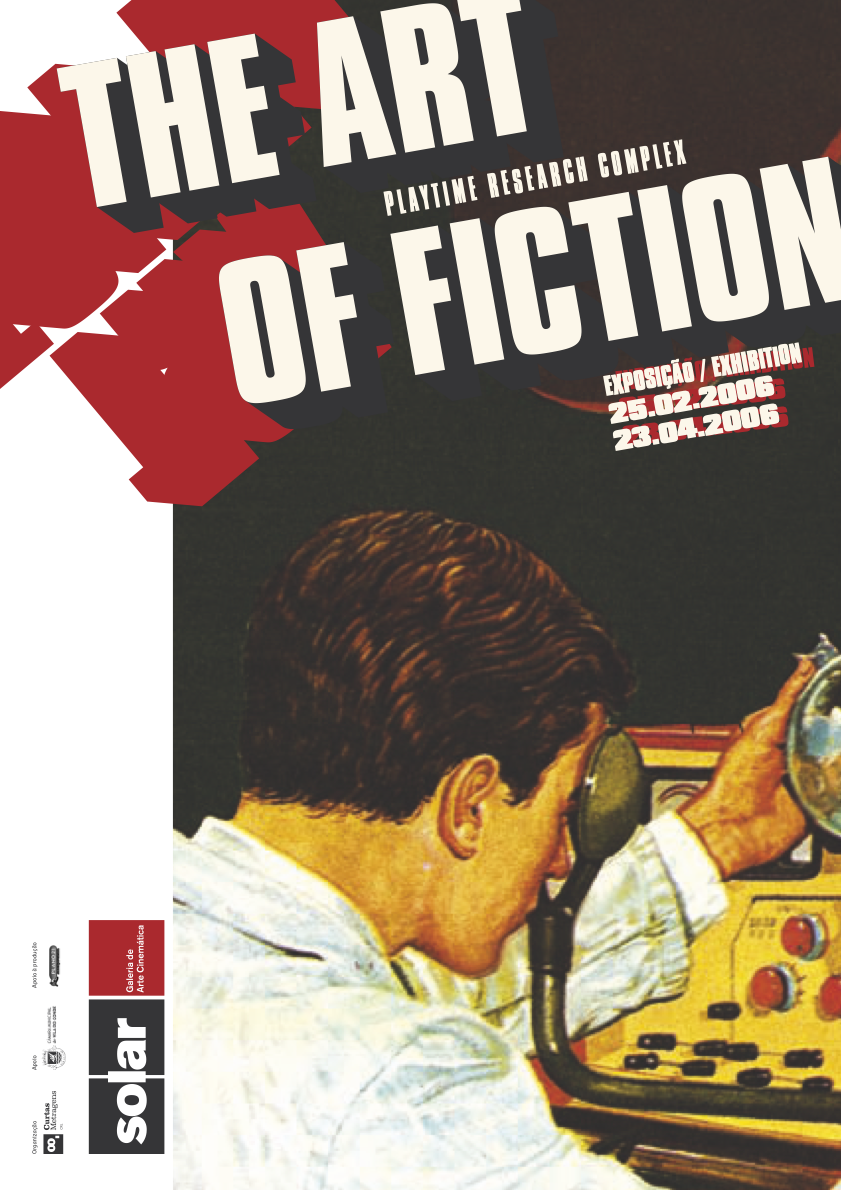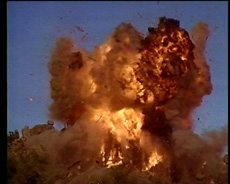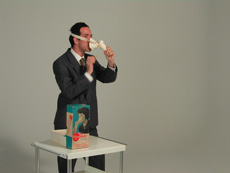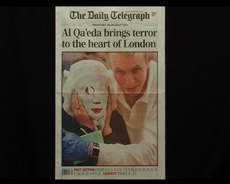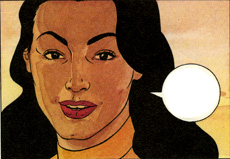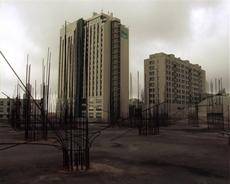EN
ANTHOLOGY OF GOOD BEHAVIOUR
(…) the world is all that which we experiment with up until fracture.
Peter Sloterdijk 1
“The practice of interference, the dynamics of fracture and disorder constitute one of the emblematic orientations of Paulo Mendes´
artwork. It is the very sphere of the exercise of sabotage which became the referential horizon of his project at the time of his first solo show, ten years ago, at Galeria Zero. On that occasion he staged The Conversation (1992), a piece which acquires a symbolic value, for in it the transgressive qualities and characteristics which steer the principles of his work method became evident. The piece, through a set made up of a table and the mismatched relation of two chairs, challenges the possible perception of reigning harmony, highlighting the idea of antagonism and dialogical impossibility. For the characterisation of this contentious atmosphere and in order to destabilise even further the image of a tenable pacific intercourse between both interlocutors, the nature of the recorded sound which echoed throughout the space of the installation contributed as well. It was a composition by Stockhausen produced by short wave receivers, whose conceptual structure based on the values of randomness and dissonance reinforced the sense of communicative disruption.(...) An obvious desire of mobilising the debate and establishing a committed relationship between artistic activity and civil society is also patent in the works which analyse the repercussions resulting from certain events of Portuguese and world current affairs. One can mention, in this sense, the treatment conferred to the equation of the relations of strength and to the world bellicose conflicts (American Way of Death, 1995 and Ultimate Warrior – Iraq, 1995), to the evocation of territorialisation, of the phenomenon of emigration and the precarious existence of immigrant workers (Index 3, joint project with Miguel Leal and Fernando José Pereira, 1998, and Morphing Mosh (Transglobalimmigration)/House #1/T3 Emigrante, 2001), and also to the thematisation of the September 11 attacks (The Sky is Still
Blue/The Creator Says Infinite Justice, 2001 and The Sky is Still Blue/ Part 2/Sleeping Beauty (Bacillus Anthracis), 2001). The way in which Paulo Mendes incorporates in these works the concrete and documental value of video, television and film recordings, of newspapers and magazines of considerable circulation, as well as the cultural and popular relevance of trivial or entertaining objects,2 is representative of that quest of establishing, in the projects, a consistent involvement with the real. That procedure transmits a sought-after effect of relative impersonality in detriment of the more expressive features of the artistic practice, and seems to be rooted in the intention of consubstantiating the contextual preponderance of all the artistic initiative. On this subject one can mention Timor Loro Sa’e – Enterrados Vivos – Trabalho em Progresso (1996) – Timor Loro Sa’e – Buried Alive – Work in Progress, where by means of a thorough documental survey on the Timorese Resistance and on several realities of the political context of the territory, the author portrayed the problematic situation which existed at the time (…).
Although it is possible to find in all of Paulo Mendes´ work a utopicnatured appeal, centred in the critical and self-critical attitude which tends to recognise the authenticity and the mobilising engagement of the artist in the midst of society,3 it is likewise important to mention the pragmatical pressupositions on which, from early on, his artistic praxis has been based. Thus, he revealed a permanent theoretical concern regarding the understanding of the multiple possibilities of interventive performance and did not neglect the establishing of a convergence with respect to the appropriation of the media-orientated strategies of the consumer society.4 That is visible, namely in the works5 in which Paulo Mendes resorts to images from advertising and to the employment of the notion of art as merchandise, in order to revert in his favour the persuasive and communicational efficacy that characterises them. Which is never merely an investment on the role and on the promotional value aknowledged in them, but an intentional displacement of their meaning and placement. In other words, it is about, in the ever-unexpected and peculiar involvement which brands his art, entangling them in a criticism that reaches and destabilises his very own philosophy.”
Sandra Vieira
in Paulo Mendes / the best of... Vogue, edição Mimesis, Porto, 2002
1 Peter Sloterdijk, Ensaio Sobre a Intoxicação Voluntária. Um Diálogo com Carlos Oliveira, Lisboa, Fenda, 1999, p.11.
2 According to these references one must mention the special attention he dedicated
to the work of Jason Rhoades, John Miller, Mike Kelley, Sigmar Polke, Paul McCarthy, Richard Prince and the Group Material.
3 Paradigmatic examples of an exigency based on the ethical responsability of the artist are O Artista está a Morrer (1995) – The Artist is Dying, e Vanitas – Retrato da Minha Geração (1990/1999-2000) – Vanitas – Portrait of My Generation –, where, by means of a podium built with industrial pallets, he points out a social intercourse between the pairs, based on instituted values of individuality and competitiveness.
4 Related to this subject, one should mention “Anotações sobre como se deve jogar xadrez”, (Notes on how you should play chess), a text by the artist published in the magazine “Confidências para o Exílio” (nº 1, Março 1994, pp. 7-19), in which these issues are approached.
5 Such is the case of the projects Do it Yourself – Faça Você Mesmo (1993), O Processo (1994) – The Process –, Heaven, Inc. (1995), Paisagem Económica Urbana (1997) – Urban Economical Landscape -, Morphing Mosh(Transglobalimmigration)/House #1/T3 Emigrante (2001), and the works Made in Portugal – Visite o Ambiente Modelo (Laboratório de Biologia Molecular com livro de Guy Debord “A Sociedade do Espectáculo” e tela quadrada de cor laranja)
(1993) – Made in Portugal – Visit the Model Environment (Molecular Biology Lab with Guy Debord´s book “The Society of Spectacle” and an orange-coloured square canvas) – and L’Art Passe Par Tout (Wallpaper) (1998).
go back



Solar - Galeria de Arte Cinemática is part of RPAC - Portuguese Network of Contemporary Art

Address
Rua do Lidador, 139
4480-791 Vila do Conde
Rua do Lidador, 139
4480-791 Vila do Conde
Schedule
Monday to Saturday
2:00 pm to 6:30 pm
Closed on Sunday
Monday to Saturday
2:00 pm to 6:30 pm
Closed on Sunday
Contacts
Gallery: solar@curtas.pt
Educational Service: s.educativo@curtas.pt
Press: press@curtas.pt
Office: 252 646 516
Curtas Store: 252 138 191
Gallery: solar@curtas.pt
Educational Service: s.educativo@curtas.pt
Press: press@curtas.pt
Office: 252 646 516
Curtas Store: 252 138 191

